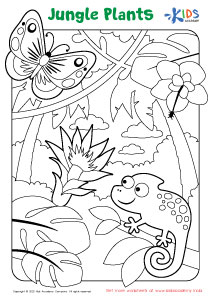3.Interdependent Relationships in Ecosystems: Environmental Impacts on Organisms
4 filtered results
-
From - To
Discover the fascinating topic of "Interdependent Relationships in Ecosystems: Environmental Impacts on Organisms." This page explores how various components of ecosystems are connected and how changes in the environment can affect living organisms. Learn about symbiotic relationships, including how plants and animals depend on one another for survival, and examine the impact of human activities, climate change, and natural disasters on these interactions. Through engaging activities and worksheets, students will build their understanding of ecological balance and the delicate interrelationships between species. Empower young learners to appreciate the importance of protecting our environment and the organisms that inhabit it!


Studying Fossils Worksheet


Bird Beaks Worksheet


Tundra Habitats Worksheet


Fossil Skulls Worksheet
Understanding interdependent relationships in ecosystems is crucial for parents and teachers because these concepts lay the groundwork for environmental literacy in children. When students learn about how organisms interact within their environments, they grasp the significance of biodiversity and the delicate balance of ecosystems. This knowledge fosters a sense of responsibility for the natural world.
Moreover, recognizing that the survival of species often depends on the health of their ecosystems can instill a proactive attitude in young learners. For instance, teaching children about how pollution or habitat destruction affects local wildlife helps them connect their actions to broader environmental consequences. This awareness can encourage sustainable practices at home and in the community.
Additionally, engaging with these topics nurtures critical thinking skills, as students explore how human activities impact ecological relationships. It opens doors to discussions about climate change and conservation, shaping informed future citizens who can advocate for environmental protection.
Lastly, in an era where ecological crises are increasingly pressing, fostering a connection to nature and understanding interdependence can empower children to become active participants in ecological stewardship. Thus, by emphasizing relationships in ecosystems, parents and teachers can cultivate a generation that values and protects the environment.
 Assign to My Students
Assign to My Students















